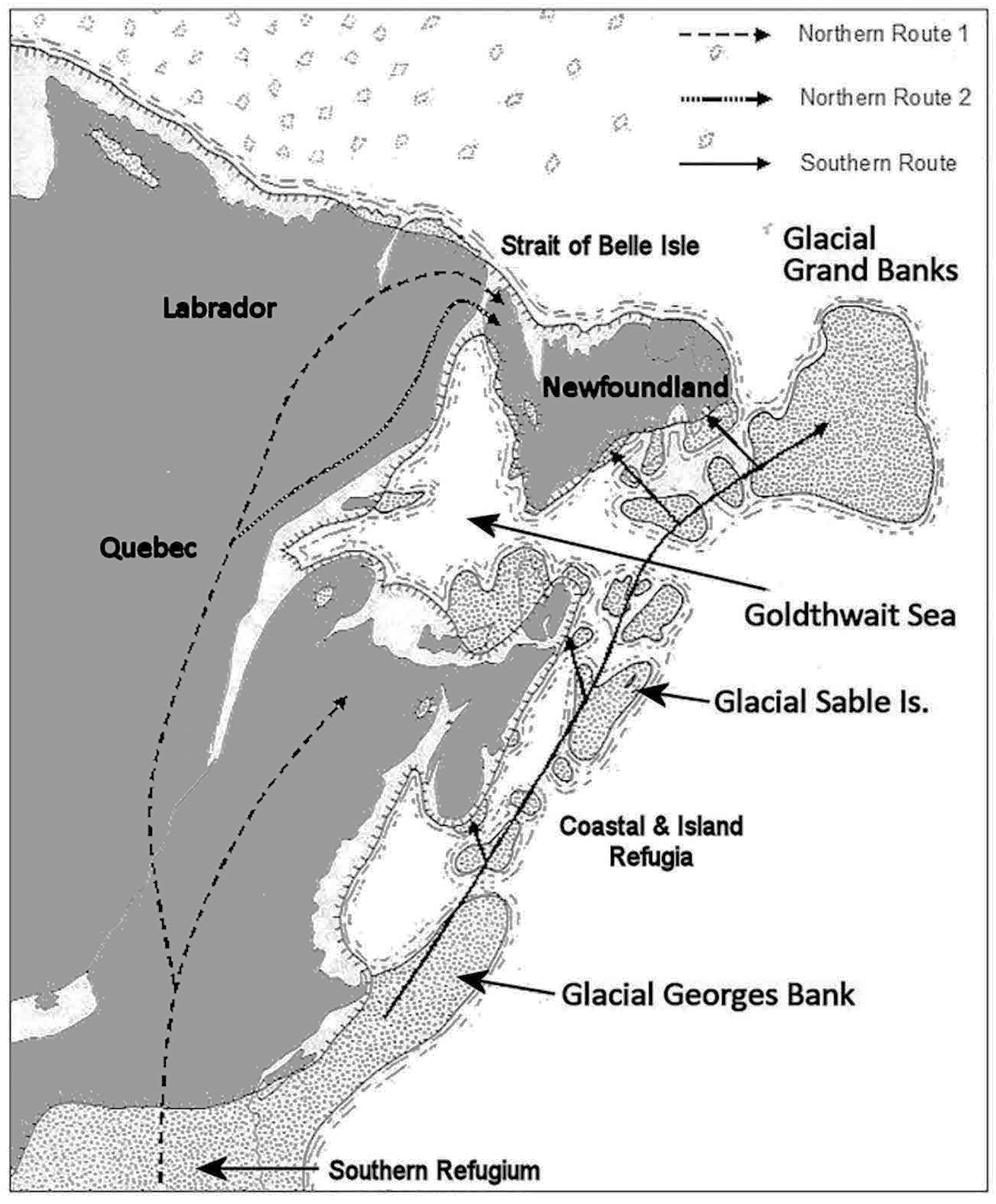
Hypothetical & proposed colonization routes for Caribou
returning to insular Newfoundland after the last Ice Age
Biogeographers suggest two refugial areas where Caribou and other large mammals might have survived when Newfoundland was covered miles deep in glacial ice, ca 10KYA. The Grand Banks, to the southeast of the island, are known to have been above water, when sea levels were lower due to sequestering of water in ice. Caribou might have been forced south, and re-entered the island from the southeast across a chain of glacial island refugia.
Alternatively, re-opening of the valley of the St Lawrence River would have provided a means of expansion from central North America into Quebec and Labrador. Caribou could then have re-entered the island from the northwest, across the narrow Strait of Belle Isle.
The genetic analysis shows that insular Caribou are most closely related to current populations in Quebec and Labrador. The rare Clade A (Figures 4 & 5) is found both on the Northern Peninsula of the island and in Quebec. This suggests that there is ongoing gene flow between the island and mainland, across the Strait of Belle Isle.
Further evidence against colonization from the southeast is that Caribou populations on the Avalon Peninsula are genetically invariant. This suggests a bottleneck and (or) genetic drift after small numbers of animals crossed the Isthmus of the Avalon. The presence of unbrowsed lichen (the favorite food of caribou) on cliffs on either side of the Narrows of the Isthmus suggests little or no movement for at least several hundred years.
Figure 6 from Wilkerson et al. 2018; Text material © 2025 by Steven M. Carr